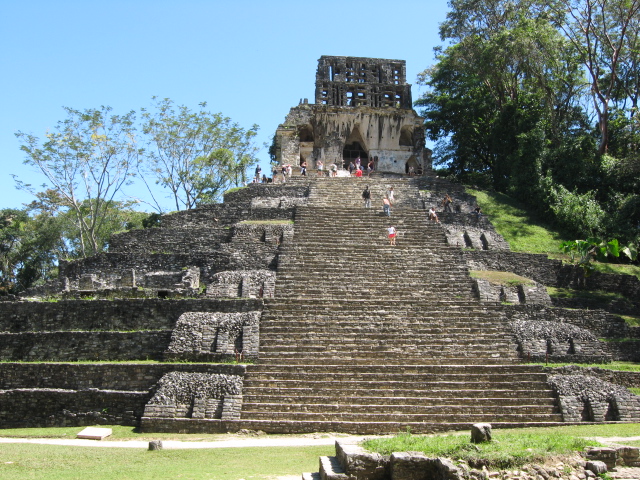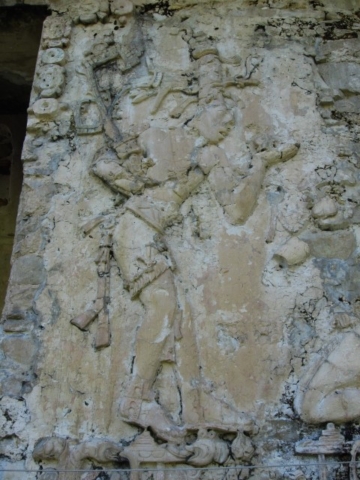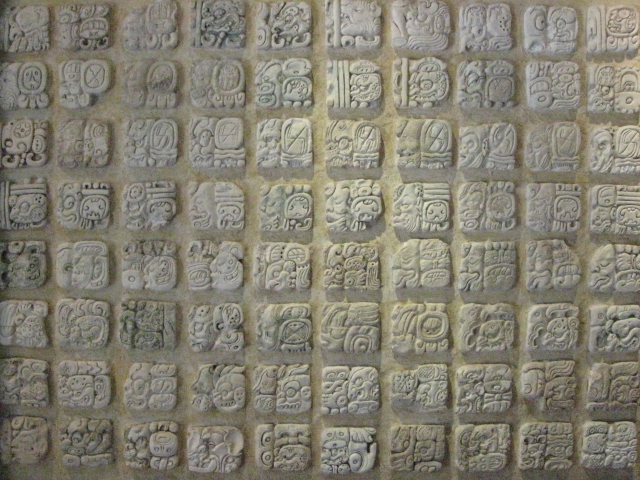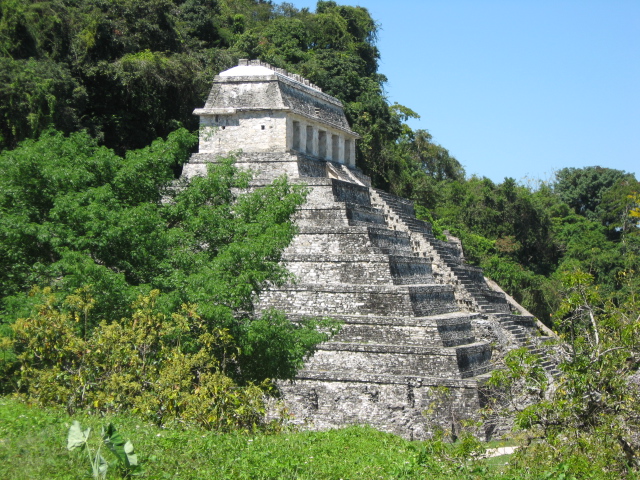
Ruta Maya – Part 12
This is Part 12 of a series of articles about the Aztec and Mayan pyramids and ruins in Central America. Updated Sep 2022
Palenque – Mayan City

The Mayan city of Palenque started as a small village from 100 BC to 100 AD, after which it grew in importance and size. It became one of the greatest Mayan cities from about 600 to 800. After 800, the city began to decline and sometime between 850 and 900, it was abandoned. Many people believe that Mayan cities were abandoned because of the arrival of the Spanish in the 1500s, but Palenque was abandoned hundreds of years before the Spanish arrived. The Spanish may have been the cause for the abandonment of some cities but certainly was not the main reason that most of the Mayan cities were abandoned.
Not just a Pyramid
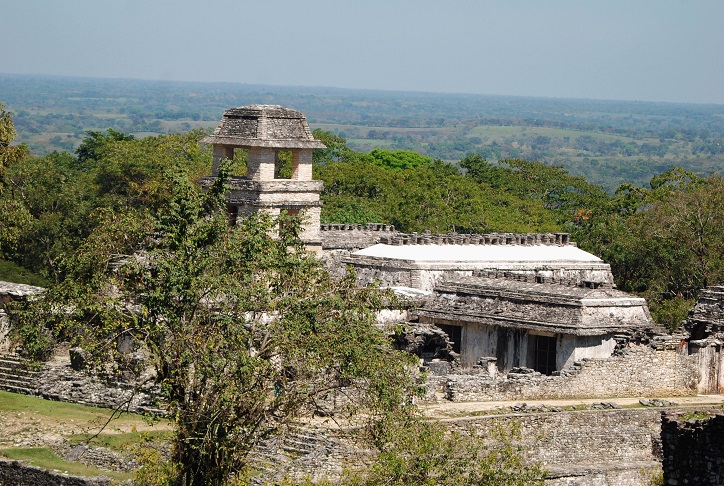
Although Palenque lacks a magnificent pyramid like Chicken Itza and Uxmal, it is one of the best Mayan cities to visit. It has many large buildings and temples. More temples than any other Mayan site that I have seen. It has a ball court, like almost all Mayan sites, but it is very small. The people at Palenque must have been more religious than those in other cities as they put their effort into building great temples instead of other structures.
The Royal Palace
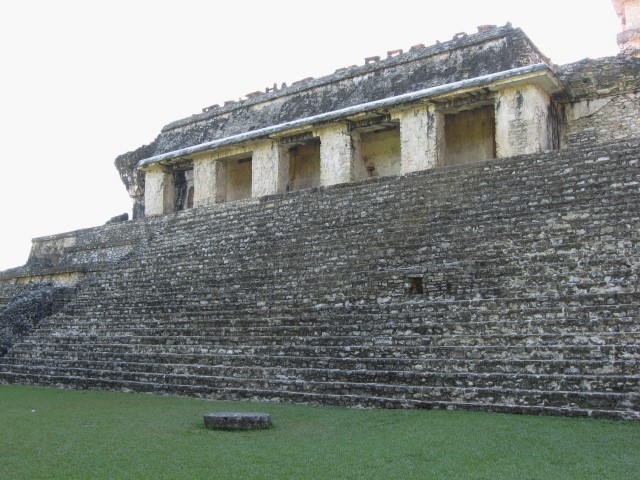
The royal palace is a massive building with two interior courtyards, a tower, and many carvings of kings and soldiers. The courtyards were used for royal ceremonies and the display of prisoners. Important events were carved in stucco on the walls.
Temples
Click photos to enlarge.
Other than the palace, most of the other large buildings are temples. The Temple of the Inscriptions (photo on the right) is the largest and most important.
The Sarcophagus of King Pascal
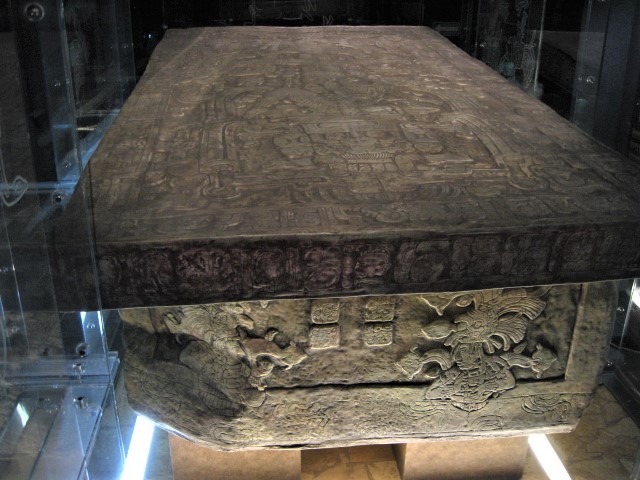
In 1952, an archaeologist named Albert Ruz found a small hidden door inside a temple under a stone slab. After getting the door open, it reveals a long, tube-like tunnel. This passageway led down into the bowels of the temple. Nine levels down, it opened into a large chamber. This chamber was the burial place of King Pascal. The king was entombed in a huge sarcophagus carved with many intricate inscriptions. The passageway had been filled in with dirt before the city was abandoned. Albert Ruz removed all this dirt by hand. Imagine a nine-story building with a narrow stairway filled with dirt. That is a lot of dirt. It took Alberto more than two years to remove it. He became the first person to see the sarcophagus of King Pascal in more than 1000 years.
Jacks were used to lift the huge lid of the sarcophagus. Inside, the king was buried with a jade mask, a lot of jewellery, and other objects. These items and a replica of the sarcophagus are now on display in the park museum (photo above). The original is still inside the temple. It must have been built in there. There is no way to get this colossal object out through the tiny door.
Carvings
Many of the structures at Palengue are covered in magnificent carvings. Here are a couple of photos.
Wildlife
The Mayan ruins of Palenque are within Palenque National Park. The park is supposed to be an area for the protection of flora and fauna, as well as the Mayan ruins. Part of the entrance fee is supposed to go toward protecting wildlife.
Despite this, there were many vendors at the ruins selling paintings on the feathers of Great Curassow and other jungle birds. Although the artwork was beautiful, I think allowing this in the park is terrible. There are also feathers for sale without artwork on them and arrows with colourful feathers of all types of birds. When they tried to sell these objects to me, I told them I preferred to see the birds alive. Perhaps the birds were killed outside the park; I don’t know, but their sale should not be allowed within the park. People should not buy these items. If the vendor sells a lot of feathers, he will kill another bird to get more.
In addition, vendors are offering the opportunity to get your photo taken with a monkey or parrot. Although the animals are cute and this seems harmless, if successful, more and more vendors will capture wildlife to get into this business. A nest full of baby parrots are often killed to capture one adult.
Summary
It took us about five hours to explore all the ruins. After that, we toured the museum. We were very tired when we got back to the hotel, but it was a perfect day.
The ruins that we toured represent only a small portion of the city. Most of the structures are still buried in the jungle, awaiting excavation.
Click here for a list of all the sites on the Ruta Maya.
